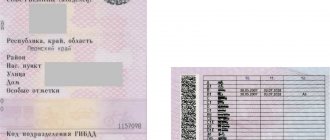Since the beginning of 2021, traffic police officers have managed to issue fines worth 83.1 billion rubles. Over the course of 9 months, pedestrians and drivers received approximately 121.3 million citations for violations. Compared to last year, the figure increased by 16.4%. Many experts associate this increase in regulations for traffic violations with the advent of new traffic cameras.
An advantageous offer from the partners of our portal - Terem Loan! Apply for a loan in the amount of up to 30 thousand rubles for a period of up to 30 days.
100% approval!
Get money
Key regions made the decline
During the first half of 2021, the treasury received 30.9 billion rubles in fines for traffic offenses. This is less than during the same period last year (hereinafter referred to as APPG) by almost 1% - then 31 billion rubles were collected. At the same time, last year the volume of fines received increased by 7% (from 28.9 billion rubles in the first half of 2016). A decrease in receipts, however, this year occurred only in 37 regions (by an average of 11%), while in 49 regions collections increased (by an average of 26.4%).
The reduction in fines received in the first half of this year is a “credit” to the key regions for collection. They showed negative dynamics: Moscow - minus 17%, St. Petersburg - minus 14.4%, Tatarstan - minus 5%. Positive dynamics were demonstrated by the constituent entities of the Russian Federation with a small volume of fines collected, with the exception of the Sverdlovsk and Moscow regions and the Krasnodar Territory, in which the collection exceeded 1 billion rubles (in the Moscow region it reached 1.8 billion).
Top 7 traffic violations in 2021
The most common traffic violations among Russians are:
- speeding: 95.9 million tickets were issued in 9 months, which is 17 million more than last year;
- non-compliance with markings and road signs: 8.4 million fines (1.3 million more than in 9 months of 2019);
- driving through a red traffic light: 3.5 million decisions, it is worth noting that this is 100 thousand less than for the same period in 2021;
- violation of the rules for placing a car on the roadway, overtaking or oncoming traffic: 2.2 million fines were issued (compared to last year, the figure increased by 100 thousand);
- lack of motorcycle helmets or unfastened seat belt: 2 million decisions, compared to 2021, the figure decreased by 200 thousand;
- lack of compulsory motor liability insurance: 1.5 million fines (over the same period in 2019, 100 thousand more decisions were issued);
- violation of tinting rules: compared to last year, the number of fines increased by 200 thousand and amounted to 1.4 million.
1 million citations for traffic violations were issued to pedestrians and other road users. Despite the fact that the figure has decreased by 200 thousand, violations of traffic rules by pedestrians still occupy one of the leading positions.
But the number of fines for failure to allow pedestrians to pass decreased by 14.3% in 2020 and now amounts to only 874.3 thousand decisions.
Moscow missed a billion...
The main blow, naturally, was the drop in collections in Moscow from 7.7 billion to 6.4 billion rubles. And this is after rapid growth last year by 37.7% (from 5.6 billion rubles). That is, the treasury lost more than 1 billion rubles in Moscow fines. In addition, collections in St. Petersburg continued to fall: in the first half of 2021, 947.5 million rubles were collected here, last year for the APPG - 860 million rubles (minus almost 10%), this year - only 737.5 billion rubles. Thus, St. Petersburg has been out of the list of regions where the volume of revenues for the first half of the year exceeds or almost reaches 1 billion rubles.
The treasury lost more than 1 billion rubles in Moscow fines. Photo 4tochki.ru
The receipt of fines in Tatarstan continues to decline: if in the first half of 2021 car owners paid them in the amount of 1.56 billion rubles, then during the previous period the collection rate fell by 12.6%, to 1.37 billion rubles. This year they collected even less - 1.3 billion rubles. Revenues also fell in key regions: in the Nizhny Novgorod region (by 9% to 747.5 million rubles) and Bashkortostan (by 9% to 717 million rubles).
The largest drop in the Volga Federal District—by more than a third (33.8%)—was in Mordovia, amounting to 115 million rubles. Next come Tambov (-32.7%) and Tver (-24%) regions, Khabarovsk Territory (-22%), Leningrad (-22.5%) and Kaliningrad (-20.5%) regions. In addition to Mordovia and Tatarstan, such regions of the Volga Federal District as Mari El (-11.2%, up to 71 million rubles), the mentioned Bashkortostan and Nizhny Novgorod region, and the Kirov region (-5%, up to 170 million rubles) also showed a significant decline.
and in the Moscow region the collection rate increased by more than a third
At the same time, revenues increased in other large and wealthy regions. Thus, in the Moscow region, fines were collected by 36.7% more than in the previous period (1.8 billion rubles), in the Krasnodar Territory - by 9.2% more (1.13 billion), in the Sverdlovsk region - by 31.4 % more (1 billion rubles), in the Samara region - by 5% (728.8 million rubles) and in the Krasnoyarsk Territory - by 21.5% (636 million rubles). Revenues increased the most in Sevastopol - five times at once, as a result, the Russian treasury here collects not 12.8 million rubles, as two years earlier, and not 20.6 million rubles, as in the previous period, but already 106.5 million rubles . The volume of revenues doubled in the Volgograd region, amounting to 566 million rubles, 1.6 times in the Tomsk region (212 million rubles), 1.4 times in the Ulyanovsk region and in Crimea - up to 293 million and 150 million rubles respectively.
Among the regions of the Volga Federal District, in addition to the Ulyanovsk region, Chuvashia also showed the best dynamics (an increase of 17.6%, to 217.8 million rubles). The positives in the Volga Federal District, in addition to the Ulyanovsk region, Chuvashia and the Samara region, are the Perm Territory (+5%, up to 407.2 million rubles) and the Saratov region, where the volume of revenues increased, however, slightly (0.87%) and amounted to 381 .5 million rubles. Thus, in most regions of the Volga Federal District, fine collections have fallen.
For the second year in a row, Tatarstan ranks 3rd in terms of receipt of fines for the first half of the year. Photo by Roman Khasaev
Tatarstan collects more fines than the entire Far Eastern Federal District or North Caucasus Federal District
Despite the drop in collections, Tatarstan for the second year in a row ranks 3rd in terms of receipt of fines for the first half of the year, but in 2016 it was ahead of the Moscow region, taking 2nd place. Let us note that the volume of fines received in Tatarstan is greater than in the entire Far Eastern Federal District (1.12 billion rubles) or in all regions of the North Caucasus (975.4 million rubles). The leadership is held by Moscow, where they collected the same amount as 50 other constituent entities of the Russian Federation. In terms of the volume of fines received, the capital of the Russian Federation is ahead of almost all federal districts, second only to the total fine collections of the regions in the Central Federal District - 12 billion rubles for the first half of 2021. The top 10 regions for receipt of fines also include the Krasnodar Territory, Sverdlovsk and Nizhny Novgorod Regions, St. Petersburg, Samara Region, Bashkortostan and Krasnoyarsk Region. The lowest fees, obviously due to the sparsely populated regions, are in the Magadan region and the Jewish Autonomous Region, in the Nenets Autonomous Okrug and the Chukotka Autonomous Okrug.
If we talk only about federal districts, then the Central Federal District and Volga Federal District, which occupy 1st and 2nd places, ultimately fell by 7.8% and 2%, respectively. The Northwestern Federal District was also in the red (-9.3%). The rest showed positive dynamics.
Federal State Statistics Service
The law obliges companies to submit accounting and statistical reports. Failure to comply with the established procedure threatens the violator with penalties. The amount of the fine for failure to submit reports to statistics is determined by Article 13.19 of the Code of Administrative Offenses of the Russian Federation.
What is the penalty for failing to submit statistics again? In this case, the amount of recovery increases significantly:
The fine for failure to submit statistics in 2021 can be charged twice as much (Article 20.25 of the Code of Administrative Offenses of the Russian Federation). The amount of the sanction cannot be less than 1000 rubles. The procedure for calculating the fine for late submission of statistics is determined by law.
Even a minimal delay will not save the offender from penalties. The fine for individual entrepreneurs for statistics is no different from the amount of the penalty for legal entities. However, its payment does not reduce the taxable amount. A fine for failure to submit statistics is imposed quite often. Main reasons:
- a large number of necessary documents and declarations;
- frequently changing laws;
- constant change in deadlines;
- forgetfulness of citizens due to heavy workload.
The penalty for failure to submit financial statements to statistics is exactly the same as in the previous case. If the enterprise did not work for some reason, then a “zero” report is submitted.
The fine for failure to submit a “zero” report to statistics ranges from 300 to 500 rubles. for officials and 200 rubles. for organizations.
In order not to get confused with frequently changing deadlines and laws, there are special programs - “Astral Report” and “1C Reporting”. Their use will save the enterprise from fines for failure to submit balance sheets to statistics.
Managers should take into account that even if an employee of the enterprise submits reports to statistics, the company and/or director will have to pay a fine.
Quite often, tax officials find distortions and inaccuracies in reports. Therefore, officials need to know why and what fines for statistics they face. Frequent violations in documents:
- distortion of information due to mistakes of incompetent workers;
- failure to meet deadlines for submitting documents;
- understatement of the tax base to minimize taxes;
- lack of an auditor's report.
In addition to the accounting report, it is necessary to submit an auditor's report to Rosstat. The penalty for submitting a report to statistics without an audit is:
Can statistics write a fine? The official position is set out in the letter of Rosstat dated February 16, 2016 No. 13-13-2/28-SMI. It states that officers and companies are liable for failure to file or late filing of reports. However, the administrative punishment is determined by the magistrate.
How to avoid a statistics penalty? It is necessary to comply with the requirements of the law and submit reporting documentation in a timely manner. However, the trend towards increasing responsibility for reporting may lead to the formation of a gap in the budget.
But there are also mitigating circumstances that make it possible to reduce the fine for late statistics. This includes:
In such a situation, a petition is submitted to statistics to reduce the fine. In the same way, you can file an application for the lifting of sanctions on the basis of Article 111 of the Tax Code of the Russian Federation. Grounds for exemption from liability:
The traffic police could count on an increase in fines received in 2018
It is interesting that initially the traffic police could count on an increase in the volume of fines received in the first half of 2021, since “in order to increase the responsibility of drivers, traffic police fines in 2021 increased by quite significant amounts, and penalties for late payment became stricter.” So, for example, in case of non-payment of fines (the fine must be paid within 70 days from the date of receipt of the decision), the case is transferred to the bailiffs, who will first offer 5 days for voluntary “debt repayment”, and if this does not happen, then the driver will have to pay already double the amount (at least 1000 rubles), in addition, an enforcement fee will be collected from him - 7% of the fine amount (at least 500 rubles).
Traffic police fines in 2021 have increased by quite significant amounts, and penalties for late payment have become more severe. Photo vistanews.ru
At the same time, in recent years there has been an increase in the number of orders issued by the State Traffic Safety Inspectorate: in 2021, 87.1 million orders were issued to Russian car owners for traffic violations, in 2017 - already 108.7 million, that is, almost 25% more (however, only 84 were paid .8 million fines). The record increase in the number of resolutions is associated with the installation of new cameras for automatically recording traffic violations (16 thousand in 2021 versus 13 thousand in 2016). It turned out that thanks to the materials from the cameras, 83.2 million orders were issued, that is, the lion's share, while only 87 million were issued with and without cameras in 2021. At the same time, with the increase in the number of fines, thanks to video recording, “live human strength,” that is, the traffic police officers themselves, whose number is ultimately decreasing.
The department could also count on an increase in the share of law-abiding payers, which was noted last year (from 70% to 78%).
Failure to comply with the speed limit
According to numerous traffic police reports and statistical data, the most common traffic violation is violation of the speed limit. For most Russian drivers, speeding is normal practice. Those who have never committed this offense practically do not exist.
According to the latest amendments, the following penalties are provided for speeding in 2021. If the excess value falls within the range of 20 to 40 units, the driver faces a fine of 500 rubles. From 40 to 60 – 1 – 1.5 thousand rubles, for repeated offenses within a year from 2 to 2.5 thousand rubles. Over 60 – from 2 to 2.5 thousand rubles or deprivation of rights for up to six months; in case of repeated violation, the period of deprivation increases to 1 year. Drivers who exceed the speed limit by 80 units or more will pay the most - 5 thousand rubles, and they may also remain without a license for up to 6 months. It should be clarified that if the offense was recorded by cameras, such a penalty as deprivation of a driver’s license is not used. It is replaced by a fine of 5,000 rubles.
How the traffic police tripped itself up
What is the reason for the decline in revenues? Firstly, the traffic police itself tripped itself up by giving drivers the opportunity to pay fines with a 50 percent discount within 20 days after issuing the decision. In 2021, it was used by 65.8 million people or 60% of all traffic violations. As a result, according to the report of the largest banks through which citizens make payments, the average fine (“average bill” for traffic violations) decreased from 600 rubles in January-June 2021 to 521 rubles in the first half of 2018.
Although the “discount” norm was introduced in 2021, the service’s rise in popularity has been gradual. At the same time, Tatarstan was included in the number of regions where motorists most often save 50% on paying fines (along with Moscow, the Moscow region, St. Petersburg and Bashkortostan). Representatives of financial institutions also point out that it is in Moscow, the Moscow region, St. Petersburg and Tatarstan that the most traffic cameras are installed, and the size of fines is larger, which affects the largest volumes of revenue.
Tatarstan is also among the regions where motorists most often save 50% on paying fines. Photo carsmotion.ru
What can a person be fined for?
Several years ago, the most common violation was ticketless travel on public transport. But times have changed: many have acquired personal transport, and it has become difficult to “stow away” on public transport. It is also very difficult to travel on the metro without a ticket unless you go through the turnstile with the ticket holder or jump over it.
Fans of noisy night gatherings can also receive fines. Drinking alcoholic beverages in public places is also punishable by a fine. If at the same time a person lights a cigarette not in a place specially designated for this purpose, then he will have to fork out a significant amount. Liability may also apply to non-smokers. For example, if a person buys cigarettes for children under 18 years of age.
Fans of petty theft in stores face administrative liability, and in some cases, criminal liability.
The coronavirus pandemic has brought with it new administrative fines: for violating the self-isolation regime, for not wearing masks and gloves in public places.
And fines for likes and reposts on the Internet for fake news no longer look like something exotic.
Late payment of personal taxes results in penalties. And for tax evasion in the amount of more than 2 million 700 thousand rubles for a period within 3 financial years in a row, criminal liability arises (Clause 1 of Article 198 of the Criminal Code of the Russian Federation).
Unfortunately, it would take a long time to list the types of violations for which a person has to pay in blood.
The second reason is the negligence of car owners
The second reason is the debts of car owners themselves due to fines: already in the first quarter of 2021, traffic police fines were the leaders in the number of enforcement proceedings of the bailiff service: 8.8 million of them were initiated according to department decisions for a total amount of 7.5 billion rubles. In total, the State Traffic Safety Inspectorate was executing 17.1 decisions worth 15.2 billion rubles in January - March 2021. Based on the results of the first half of 2021, drivers have already received about 55.2 million fines, but 33.3% of fines were not paid on time, which is much more than for the APPG in the first half of 2021 (then 22% and 29 .6% fines respectively). And although experts believe that by the end of 2021 the number of fines will reach 110 million, there is no hope for an increase in revenues.
Of the 55.2 million fines issued in the first half of 2021, 54.1 million were eligible for “preferential conditions.” But in fact, only 60% of them, or 31.9 million fines, were paid at a discount. In total, out of 55.2 million fines issued, car owners paid only 36.8 million (71%). Let us recall that at the end of 2021, bailiffs collected almost half of the debts from defaulters: out of a debt of 28 billion rubles, 14.4 billion rubles were collected.
Fines for traffic offenses, rub.
| The subject of the Russian Federation | 1st half of 2021 | 1st half of 2021 | 1st half of 2021 | Availability of road transport as of January 1, 2018 | Average amount of penalties per car, rub. |
| Russian Federation | 30.992.817.003,16 | 31.077.642.002,86 | 28.992.643.429,14 | 54.216.214,00 | 572 |
| Moscow | 6.430.243.585,16 | 7.753.342.292,10 | 5.630.138.404,53 | 4.641.368,00 | 1.385 |
| Moscow region | 1.899.672.825,83 | 1.389.291.977,47 | 1.416.763.846,83 | 2.971.814,00 | 639 |
| Republic of Tatarstan (Tatarstan) | 1.307.348.204,60 | 1.369.511.443,38 | 1.565.928.469,48 | 1.346.518,00 | 971 |
| Krasnodar region | 1.132.030.304,42 | 1.036.405.046,61 | 708.684.217,89 | 2.104.632,00 | 538 |
| Sverdlovsk region | 1.077.501.229,07 | 819.668.715,14 | 797.417.833,49 | 1.916.798,00 | 562 |
| Nizhny Novgorod Region | 747.571.366,89 | 819.986.029,40 | 801.657.934,15 | 1.223.068,00 | 611 |
| Saint Petersburg | 735.574.044,59 | 859.290.119,09 | 947.526.813,26 | 1.964.271,00 | 374 |
| Samara Region | 728.790.780,32 | 693.498.735,81 | 644.238.702,19 | 1.128.707,00 | 646 |
Sergey Afanasyev
Analytics








